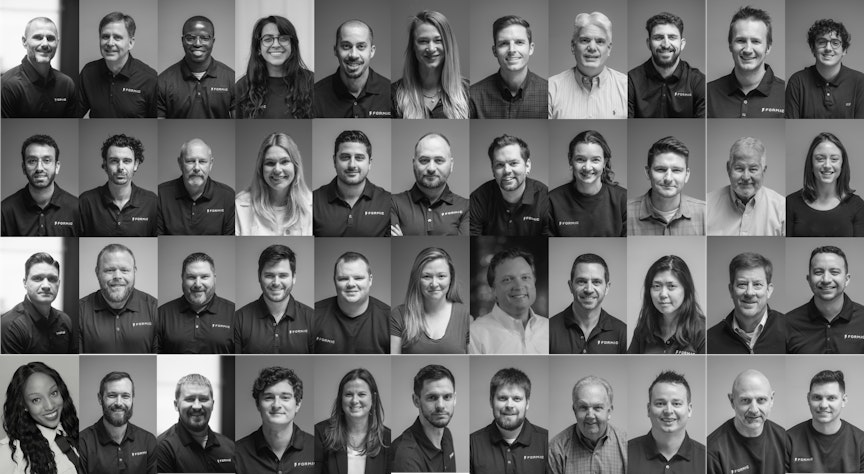When questioning whether or not automation is a necessity, the easiest answer is to provide clear examples of how it is the most useful and essential tool. In today’s world, many manufacturers still depend heavily on the working hands of people, even if these tasks may be dangerous or extremely repetitive. Most of these tasks are difficult to hire because of their reputation and the staffing shortfall leads to motivations to raise wages. These losses can be catastrophic when small to mid-size manufacturers are trying to balance their finances.
What makes automation a necessity is its ability to seamlessly fill these roles while also increasing the rate of production. But then you may ask, what are these tasks that are easily replaceable? What are the most common and applicable robots in manufacturing?
Let us separate them by industry…
Metal Fabrication
Metal fabrication is a staggeringly large industry within the American market, valued at $18.98 Billion in 2015 and growing with increasing automotive sales. These factories are equipped to make metal products and use machinery to complete tasks such as cutting, folding, welding, casting, and assembly.
In these factories, press brake operators and fabricators spend hours repeating the same tasks. By implementing robots, these workers can shift their skill sets into more valuable responsibilities, allowing the robot to take on the boring and repetitive tasks that no one wants.
Robots can deliver production efficiency and value from day one of deployment. These systems perform well in a production line: decreasing cycle time, ensuring quality control, and reducing the risk of injury. Automated machine tending and welding cover many bases in the metal fabrication industry.
Machine Tending
An extremely popular robotic application in metal fabrication, these systems are responsible for loading or unloading a given machine with specific parts or materials. This application works commonly with injection molds, press brakes, CNC lathes, and mills.
Welding
An automated welder takes the form of a robotic arm with a high-heat torch. These robots can handle a variety of tasks such as arc, resistance, spot, TIG, and others.
Consumer Packaged Goods
With the pandemic, consumer demand has taken a significant upturn, 7.1% higher than last year in June 2021, especially due to the surge in online or at-home consumption. Even with increasing demands, industry employment remains steady despite growth in job openings. According to the Bureau of Labor Statistics, there are 362,000 non-durable manufacturing jobs open in June 2021 but only 198,000 new hires. There is a need for an extra set of hands.
The flexibility and scalability of today’s robots offer smaller factories the ability to confront consumer demands. Palletizing and carton erecting systems are just two common applications that can replace repetitive and labor intensive tasks that are found in almost all CPG manufacturing facilities. The capabilities of these robots continue to evolve and as factories implement new applications into their facilities, new revenue opportunities unfold.
Palletizing
Palletizing forms layers of individual cases onto a pallet, freeing humans from executing repetitive lifting tasks. These systems can either be industrial or collaborative.
Carton Erecting
A robotic carton erector unfolds and seals the bottom of a box before it is packed on a production line. This saves the need for manual folding and taping and ensures consistency and uniformity.
Food & Beverage
This is an ever-expanding industry with revenues expected to show an annual growth rate of 5.84% by 2025. Safety and efficiency are two major points when dealing with perishable goods. Factories are looking for ways to responsibly improve productivity without sacrificing quality. Robotics and automation offer solutions to the demanding problems these manufacturers face.
There is still a heavy dependence on manual labor in which workers are sitting on the factory floor picking or sorting products on a belt. Shifting to automation allows these workers to focus on monitoring the effectiveness of the automated process, leaving the repetitive tasks to the robots.
Many of the repetitive and predictable tasks in a food and beverage facility are similar to a CPG facility; therefore, systems like carton erecting, and palletizing are also essential. Case packing is similarly common and important to the production line and a great candidate for automation.
Case Packing
A robotic case packing line automates the packaging of multiple products into the appropriate case. The system can be customized to be able to handle the size, weight, and shape of the product.
Automation as a concept can be confusing. Some understand it in a futuristic viewpoint, but realistically these real world applications like robotic palletizers and case packers are only replacing repetitive and easy tasks. Again, these are common tasks found in many manufacturing facilities that are essentially the “lowest hanging fruit” in automation.
To learn more about how to determine what tasks are good for automation, please take a look at this blog written by our Co-Founder Misa.


